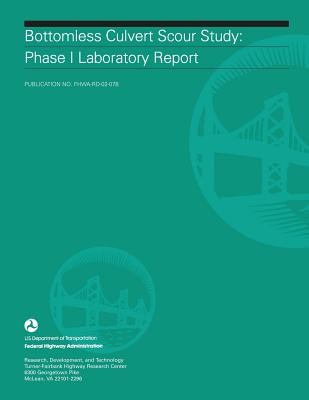
- We will send in 10–14 business days.
- Author: Federal Highway Administration
- Publisher: CreateSpace Independent Publishing Platform
- Year: 2015
- Pages: 74
- ISBN-10: 1508836515
- ISBN-13: 9781508836513
- Format: 21.6 x 28 x 0.4 cm, softcover
- Language: English
- SAVE -10% with code: EXTRA
Reviews
Description
Bottomless (or three-sided) culverts use the natural channel bed and are environmentally attractive alternatives to traditional closed culverts. Moreover, they are considered by many highway agencies to be economical alternatives for replacing short bridges. They are typically placed on spread footings, and the issue of scour and the depth of footing must be addressed. The scour problem is analogous to abutment and contraction scour in a bridge opening and can be treated in much the same manner. Since abutment scour estimates at bridge openings are often quite large, a scour protection task was included to determine the sizes of rock riprap that might be required to reduce scour in the most critical zones. A major consideration in estimating scour and riprap sizes is the flow distribution at the entrance of the culvert, especially when there is side flow that is being contracted to pass through the opening. Although the analysis was aimed at simple one-dimensional (1D) approximations for this flow distribution, some 2D numerical simulations of the laboratory experiments were conducted to demonstrate how this could be used if they are available to a designer. As numerical models become user-friendly and computers become more powerful, 2D and even 3D numerical results are likely to become readily available to designers.
EXTRA 10 % discount with code: EXTRA
The promotion ends in 20d.10:12:12
The discount code is valid when purchasing from 10 €. Discounts do not stack.
- Author: Federal Highway Administration
- Publisher: CreateSpace Independent Publishing Platform
- Year: 2015
- Pages: 74
- ISBN-10: 1508836515
- ISBN-13: 9781508836513
- Format: 21.6 x 28 x 0.4 cm, softcover
- Language: English English
Bottomless (or three-sided) culverts use the natural channel bed and are environmentally attractive alternatives to traditional closed culverts. Moreover, they are considered by many highway agencies to be economical alternatives for replacing short bridges. They are typically placed on spread footings, and the issue of scour and the depth of footing must be addressed. The scour problem is analogous to abutment and contraction scour in a bridge opening and can be treated in much the same manner. Since abutment scour estimates at bridge openings are often quite large, a scour protection task was included to determine the sizes of rock riprap that might be required to reduce scour in the most critical zones. A major consideration in estimating scour and riprap sizes is the flow distribution at the entrance of the culvert, especially when there is side flow that is being contracted to pass through the opening. Although the analysis was aimed at simple one-dimensional (1D) approximations for this flow distribution, some 2D numerical simulations of the laboratory experiments were conducted to demonstrate how this could be used if they are available to a designer. As numerical models become user-friendly and computers become more powerful, 2D and even 3D numerical results are likely to become readily available to designers.


Reviews